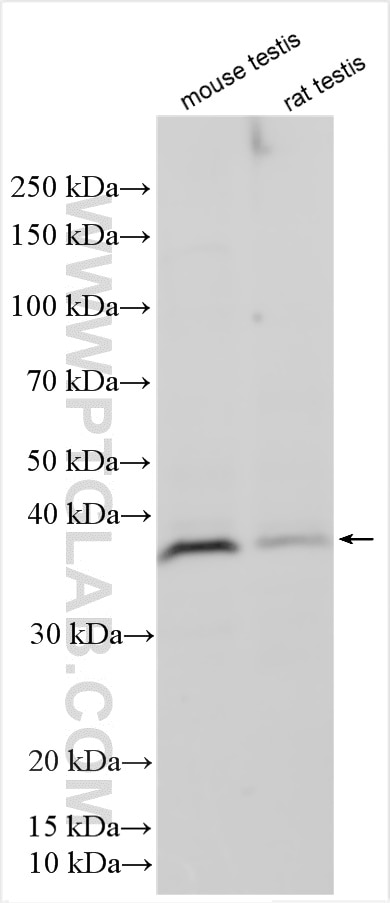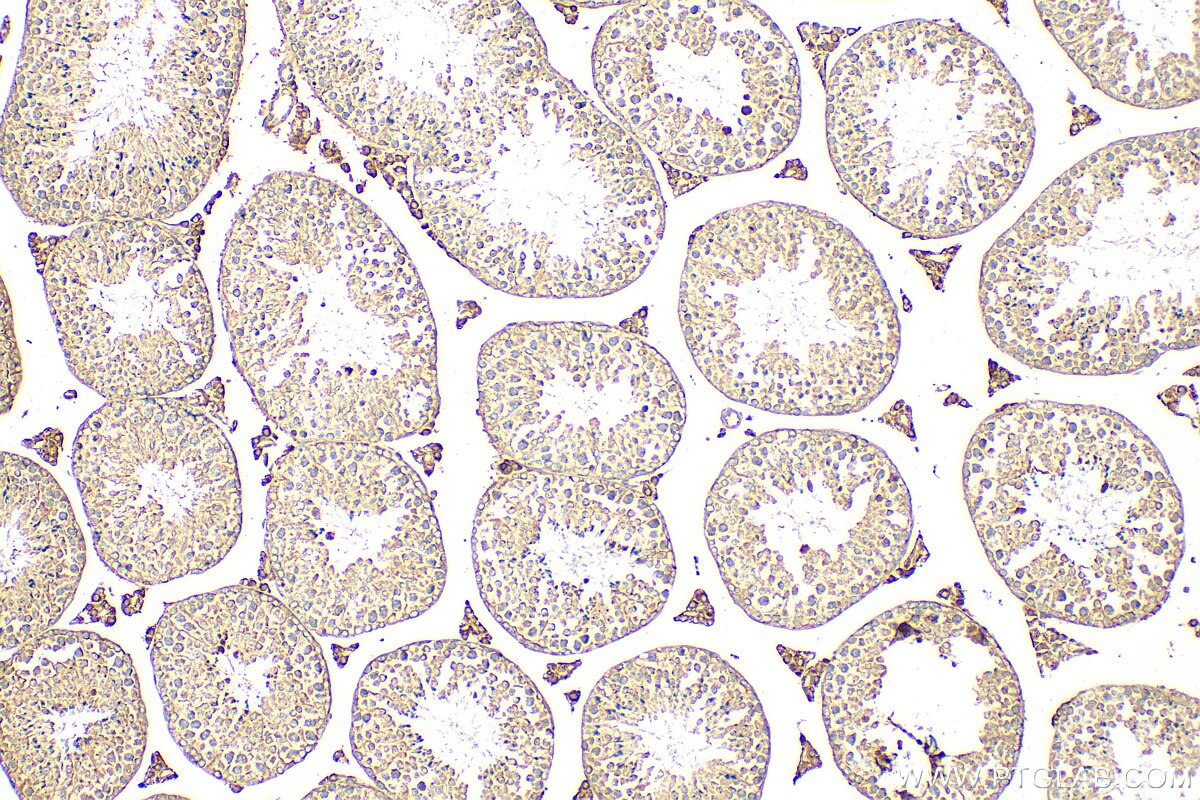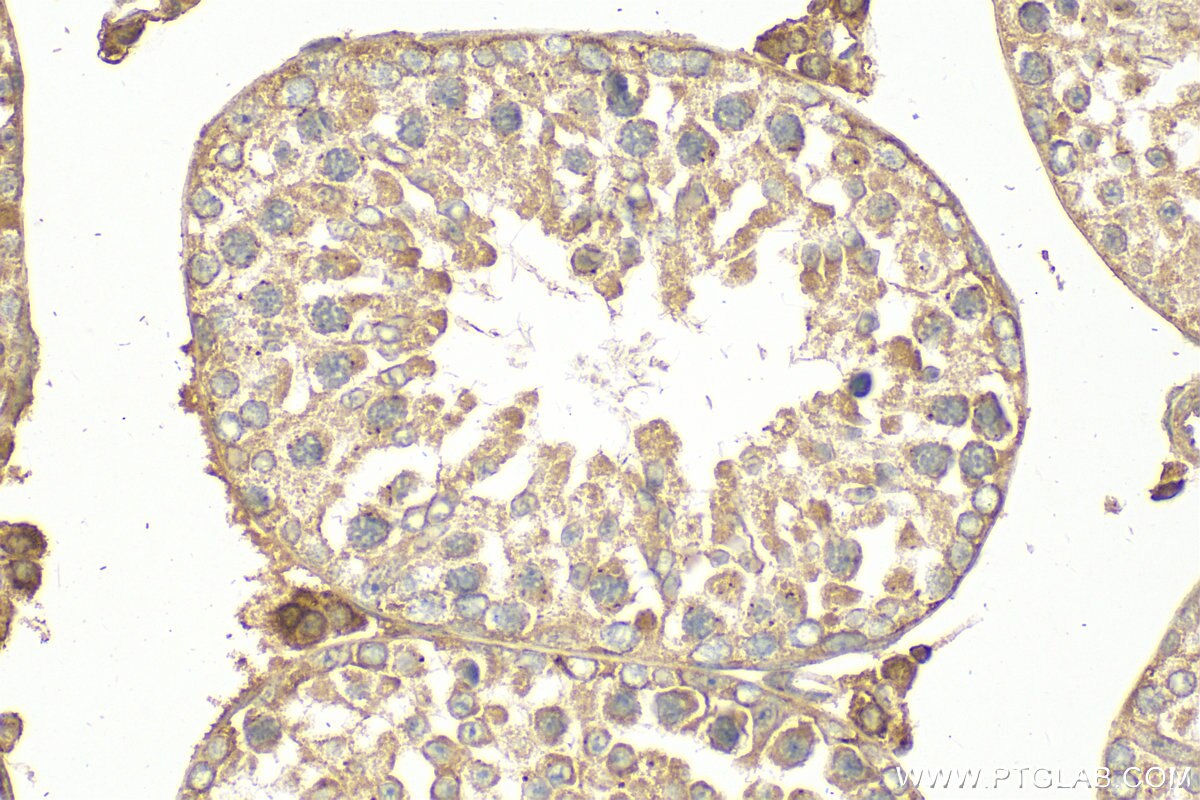Tested Applications
| Positive WB detected in | mouse testis tissue, rat testis tissue |
| Positive IHC detected in | mouse testis tissue Note: suggested antigen retrieval with TE buffer pH 9.0; (*) Alternatively, antigen retrieval may be performed with citrate buffer pH 6.0 |
Recommended dilution
| Application | Dilution |
|---|---|
| Western Blot (WB) | WB : 1:500-1:2000 |
| Immunohistochemistry (IHC) | IHC : 1:50-1:500 |
| It is recommended that this reagent should be titrated in each testing system to obtain optimal results. | |
| Sample-dependent, Check data in validation data gallery. | |
Product Information
18000-1-AP targets MAGEB3 in WB, IHC, ELISA applications and shows reactivity with human, mouse, rat samples.
| Tested Reactivity | human, mouse, rat |
| Host / Isotype | Rabbit / IgG |
| Class | Polyclonal |
| Type | Antibody |
| Immunogen |
CatNo: Ag12476 Product name: Recombinant human MAGEB3 protein Source: e coli.-derived, PET28a Tag: 6*His Domain: 1-346 aa of BC074756 Sequence: MPRGQKSTLHAREKRQQTRGQTQDHQGAQITATNKKKVSFSSPLILGATIQKKSAGRSRSALKKPQRALSTTTSVDVSYKKSYKGANSKIEKKQSFSQGLSSTVQSHTDPLTMKTNMLVQFLMEMYKMKKPIMKADMLKIVQKSHKNCFPEILKKASFNMEVVFGVDLKKVDSTKDSYVLVSKMDLPNNGTVTRGRGFPKTGLLLNLLGVIFMKGNCATEEKIWEFLNKMRIYDGKKHFIFGEPRKLITQDLVKLKYLEYRQVPNSNPARYEFLWGPRAHAETSKMKVLEFWAKVNKTVPSAFQFWYEEALRDEEERVQAAAMLNDGSSAMGRKCSKAKASSSSHA Predict reactive species |
| Full Name | melanoma antigen family B, 3 |
| Calculated Molecular Weight | 346 aa, 39 kDa |
| Observed Molecular Weight | 39 kDa |
| GenBank Accession Number | BC074756 |
| Gene Symbol | MAGEB3 |
| Gene ID (NCBI) | 4114 |
| RRID | AB_3085548 |
| Conjugate | Unconjugated |
| Form | Liquid |
| Purification Method | Antigen affinity purification |
| UNIPROT ID | O15480 |
| Storage Buffer | PBS with 0.02% sodium azide and 50% glycerol, pH 7.3. |
| Storage Conditions | Store at -20°C. Stable for one year after shipment. Aliquoting is unnecessary for -20oC storage. 20ul sizes contain 0.1% BSA. |
Background Information
MAGE genes encode for tumor-rejection antigens and are expressed in tumors of different histologic types and Testis/placenta, but not in other normal tissues. MAGEB3, also named CT3.5, is a member of the MAGEB gene family.
Protocols
| Product Specific Protocols | |
|---|---|
| IHC protocol for MAGEB3 antibody 18000-1-AP | Download protocol |
| WB protocol for MAGEB3 antibody 18000-1-AP | Download protocol |
| Standard Protocols | |
|---|---|
| Click here to view our Standard Protocols |








